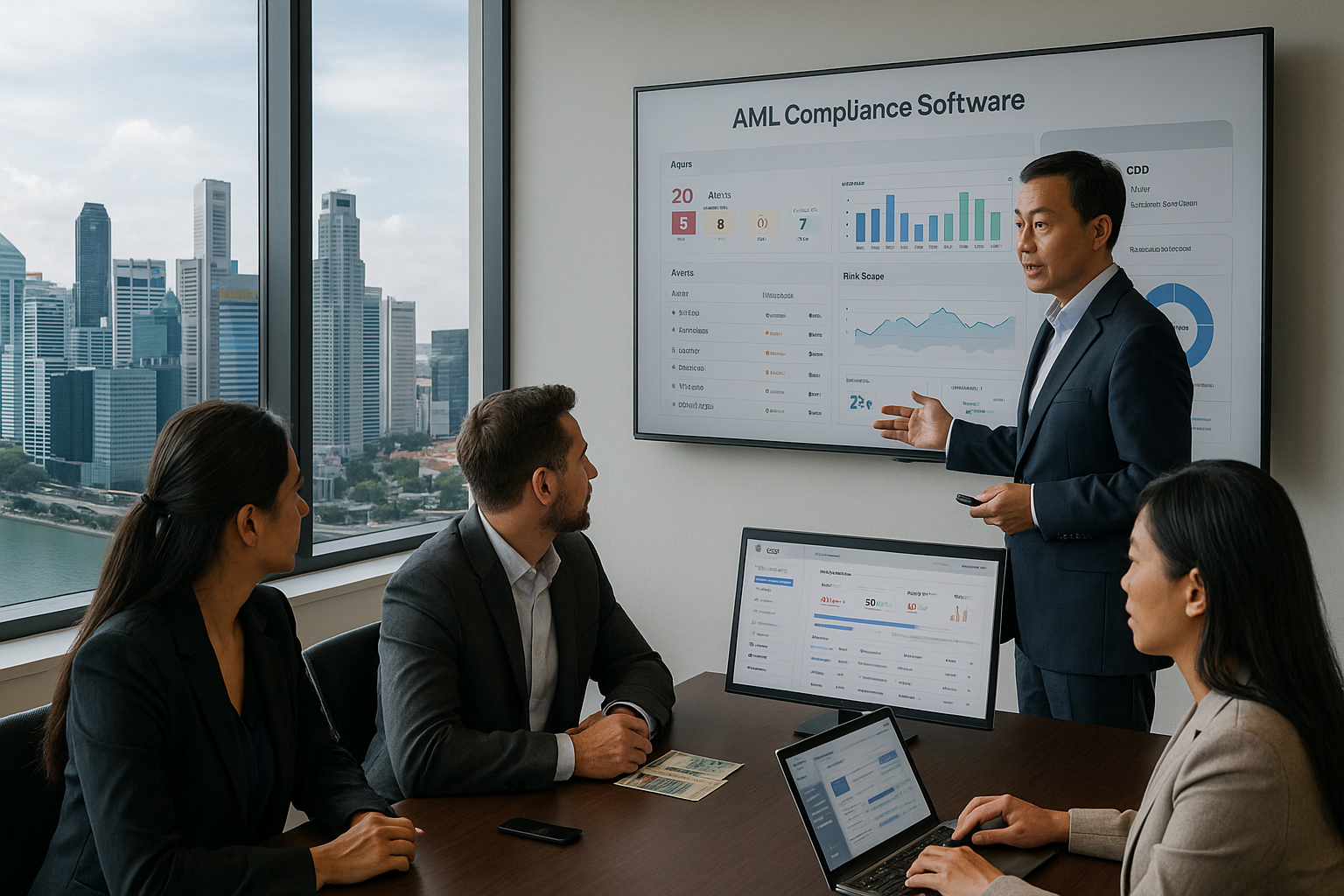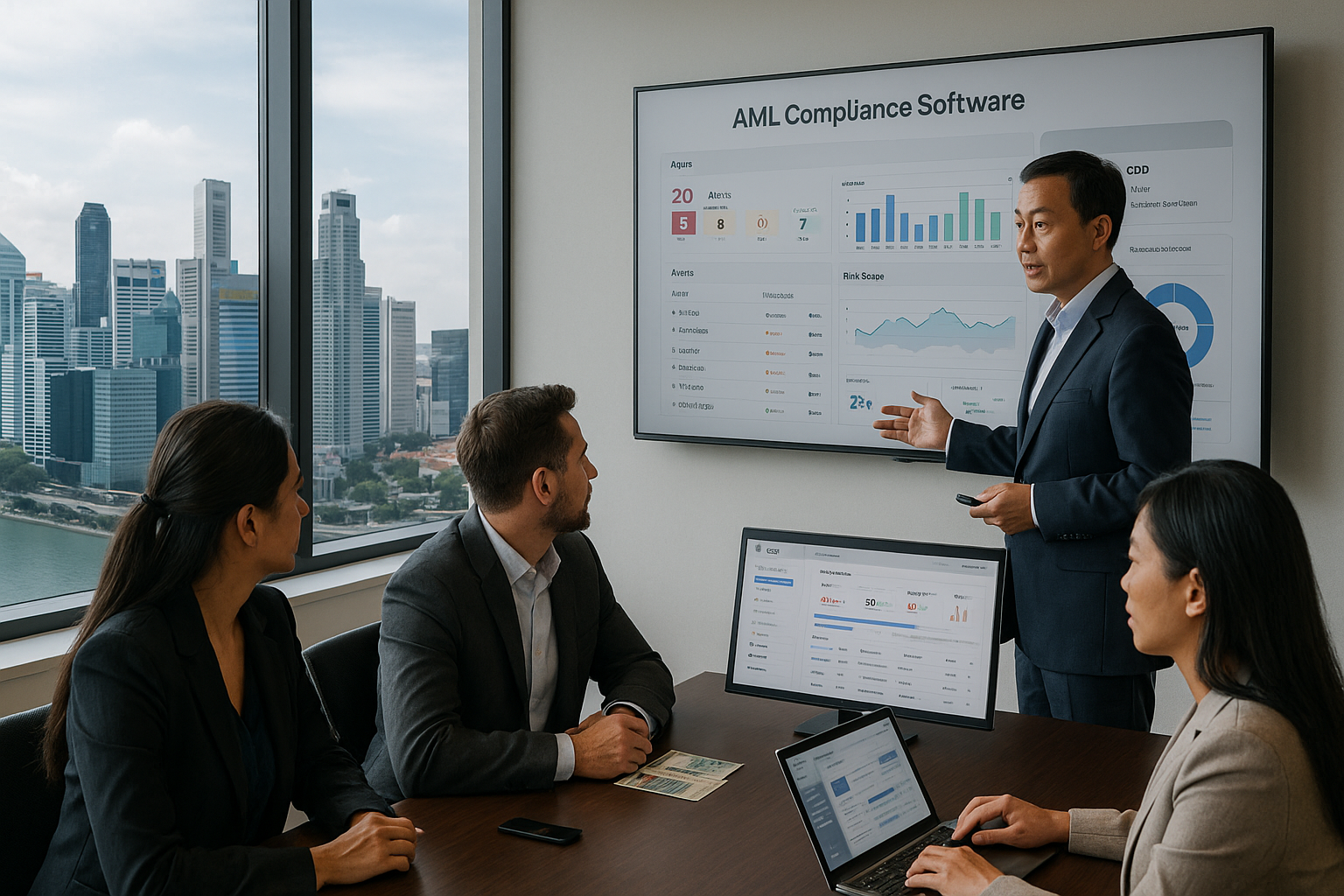AML CFT Software in Australia: Strengthening the Frontline of Compliance in 2025
.svg)
With AUSTRAC tightening oversight, AML CFT software is now essential for Australian banks and fintechs to detect, prevent, and report financial crime in real time.
Introduction
Australia’s financial system is more connected, digital, and fast-moving than ever before. While innovation has brought convenience to consumers, it has also opened new pathways for money laundering and terrorism financing. Criminal networks exploit online payments, remittances, and cross-border flows to conceal illicit funds and finance illegal activity.
In response, AUSTRAC — Australia’s financial intelligence unit — has placed renewed focus on anti-money laundering and counter-terrorism financing (AML/CTF) obligations. Banks, fintechs, and remittance providers are now expected to deploy advanced AML CFT software that can monitor activity in real time, generate regulator-ready reports, and adapt to emerging typologies.
This blog explores how AML CFT software helps Australian institutions stay compliant, reduce risk, and protect trust in the financial system.

The Role of AML CFT Software
AML CFT software forms the technological foundation of compliance programs. It automates the detection, analysis, and reporting of suspicious transactions, ensuring that financial institutions meet their obligations under the AML/CTF Act 2006.
Core Functions Include:
- Customer Due Diligence (CDD): Verifying identities and assessing risk.
- Transaction Monitoring: Detecting suspicious activity and anomalies.
- Sanctions and PEP Screening: Checking customers and payments against global watchlists.
- Case Management: Streamlining investigations and documentation.
- Regulatory Reporting: Automating Suspicious Matter Reports (SMRs), Threshold Transaction Reports (TTRs), and International Funds Transfer Instructions (IFTIs).
In short, AML CFT software helps institutions identify and prevent money laundering and terrorism financing before they cause harm.
Why AML CFT Software Matters in Australia
1. Rising Threat of Financial Crime
Criminals exploit instant payments, shell companies, and cross-border networks to move illicit funds. Terrorist financiers use small-value transactions to avoid detection.
2. AUSTRAC’s Increasing Oversight
AUSTRAC has ramped up enforcement against institutions that fail to maintain adequate AML/CTF controls, issuing multi-million-dollar penalties in recent years.
3. Real-Time Payment Systems
With NPP and PayTo, funds move in seconds. Institutions need real-time software capable of detecting risks instantly.
4. High Cost of Compliance
Traditional rule-based systems generate high false positives, driving operational costs up. Modern software reduces this burden through AI and automation.
5. Customer Trust and Reputation
Robust AML/CFT systems protect institutions from reputational damage, regulatory penalties, and customer loss.
AUSTRAC’s AML/CTF Compliance Framework
AUSTRAC expects reporting entities to:
- Develop and maintain risk-based AML/CTF programs.
- Perform customer identification and verification (KYC/CDD).
- Monitor ongoing transactions and report suspicious activity.
- File SMRs, TTRs, and IFTIs promptly.
- Conduct regular independent reviews of their AML systems.
- Ensure training and governance for staff and compliance officers.
Non-compliance can lead to civil penalties, criminal charges, or enforceable undertakings.
Common Risks and Red Flags in AML/CFT
- Transactions inconsistent with customer profile or business purpose.
- Multiple small transfers designed to avoid reporting thresholds (structuring).
- Transfers involving high-risk jurisdictions.
- Rapid movement of funds between newly opened accounts.
- Links to politically exposed persons (PEPs) or adverse media.
- Dormant accounts suddenly becoming active.
AML CFT software uses advanced analytics to flag these patterns in real time.
Challenges in Traditional AML Systems
- High False Positives: Outdated rule-based systems generate thousands of irrelevant alerts.
- Lack of Real-Time Capabilities: Batch processing cannot detect risks in NPP or PayTo transfers.
- Limited CFT Coverage: Many tools focus on money laundering but neglect terrorism financing indicators.
- Fragmented Systems: AML, fraud, and onboarding functions often operate in silos.
- Cost and Complexity: Maintaining legacy systems strains resources.
These challenges have made advanced, AI-driven AML CFT software a necessity.

Key Features of Modern AML CFT Software
1. Real-Time Monitoring
Monitors transactions across all channels — including NPP, PayTo, cards, and remittance — in milliseconds.
2. AI and Machine Learning
Learns from emerging patterns and typologies, improving accuracy while reducing false positives.
3. Federated Intelligence
Leverages anonymised typologies and insights shared across institutions through secure collaboration frameworks.
4. Comprehensive Screening
Covers sanctions, PEPs, and adverse media with continuous watchlist updates.
5. Integrated Case Management
Links alerts to investigations and creates regulator-ready reports.
6. Regulatory Reporting Automation
Automatically generates SMRs, TTRs, and IFTIs aligned with AUSTRAC requirements.
7. Explainable AI (XAI)
Ensures decisions are transparent, auditable, and defensible to regulators.
8. Cross-Channel Coverage
Combines AML and fraud detection for unified risk visibility.
Case Example: Community-Owned Banks Setting the Benchmark
Community-owned institutions such as Regional Australia Bank and Beyond Bank have shown that world-class AML CFT compliance is achievable even with limited resources. By adopting advanced RegTech solutions, they have enhanced detection accuracy, reduced false positives, and strengthened AUSTRAC reporting — while keeping customer trust at the centre of their operations.
Spotlight: Tookitaki’s FinCense
FinCense, Tookitaki’s AI-powered compliance platform, is redefining AML CFT software for Australian institutions.
- Real-Time Detection: Scans transactions instantly across all payment rails.
- Agentic AI: Learns from evolving money laundering and terrorism financing typologies.
- Federated Intelligence: Leverages global scenarios contributed by experts in the AFC Ecosystem.
- FinMate AI Copilot: Assists investigators with summarised cases, insights, and regulator-ready reports.
- Comprehensive Coverage: Integrates AML, CFT, sanctions, and fraud monitoring into one unified platform.
- AUSTRAC Alignment: Automates compliance reporting and audit trails for regulatory confidence.
FinCense enables institutions to move from reactive compliance to proactive risk management.
Best Practices for Implementing AML CFT Software
- Adopt a Risk-Based Approach: Calibrate systems to focus on higher-risk customers and products.
- Integrate AML and CFT Functions: Avoid silos to improve overall detection quality.
- Ensure Data Quality: Clean, standardised data improves model performance.
- Invest in Explainable AI: Regulators prefer transparent, interpretable models.
- Engage in Continuous Learning: Update typologies regularly through federated intelligence.
- Automate Regulatory Reporting: Reduce manual effort and ensure timely submissions.
- Conduct Regular Independent Reviews: Validate performance and compliance alignment.
The Future of AML CFT Software in Australia
- AI-Native Compliance Systems:
Next-generation software will use local large language models (LLMs) to analyse complex transactions in context. - Deeper CFT Integration:
Systems will enhance terrorism financing detection through network and behavioural analysis. - Industry Collaboration:
Shared, federated intelligence will allow faster detection of emerging threats. - Cloud-Native Deployments:
Cloud technology will enable scalability, agility, and reduced infrastructure costs. - Digital Identity Verification:
Stronger onboarding controls will connect KYC to transaction monitoring seamlessly. - Proactive Compliance:
Future systems will predict suspicious activity before it occurs, not just detect it after the fact.
Benefits of Modern AML CFT Software
- Reduced False Positives: AI-driven models focus investigator time on real risks.
- Improved Regulatory Confidence: Transparent, auditable systems build trust with AUSTRAC.
- Enhanced Efficiency: Automation shortens investigation cycles and reporting turnaround.
- Cross-Functional Insights: Unified AML and fraud data improves risk visibility.
- Customer Protection: Stronger systems protect consumers and reinforce institutional trust.
Conclusion
In an era of instant payments and global connectivity, AML CFT compliance has become one of the most critical functions for Australian financial institutions. AUSTRAC’s heightened oversight means that banks and fintechs must deploy intelligent, real-time systems capable of detecting and preventing both money laundering and terrorism financing.
Community-owned banks like Regional Australia Bank and Beyond Bank prove that advanced compliance is achievable at any scale. Platforms like Tookitaki’s FinCense lead this evolution by combining Agentic AI, federated intelligence, and automation to help institutions strengthen their defences while reducing operational costs.
Pro tip: The future of compliance belongs to those who see AML and CFT not as obligations, but as opportunities to build safer, more trusted financial ecosystems.
Experience the most intelligent AML and fraud prevention platform
Experience the most intelligent AML and fraud prevention platform
Experience the most intelligent AML and fraud prevention platform
Top AML Scenarios in ASEAN

The Role of AML Software in Compliance

The Role of AML Software in Compliance









